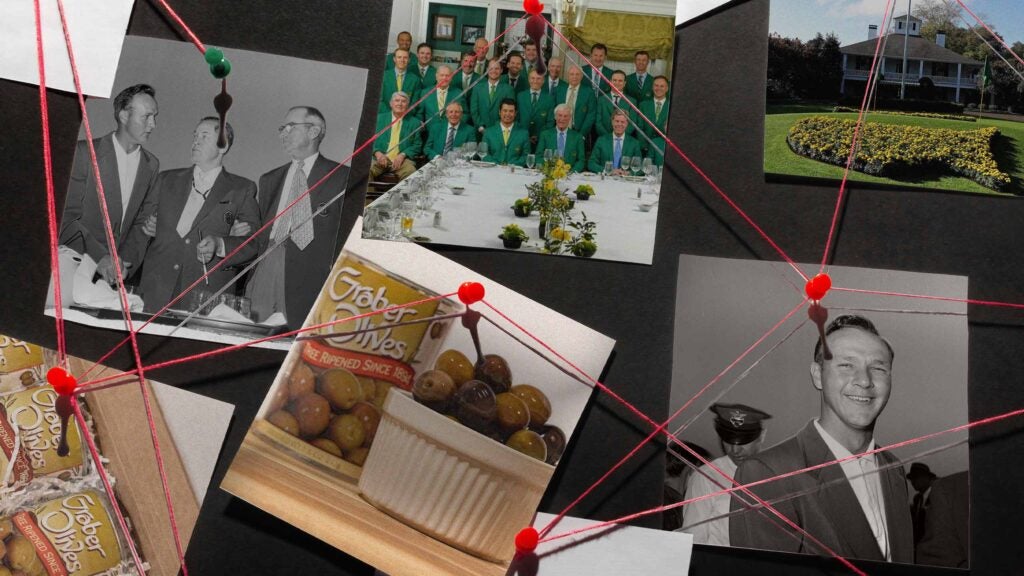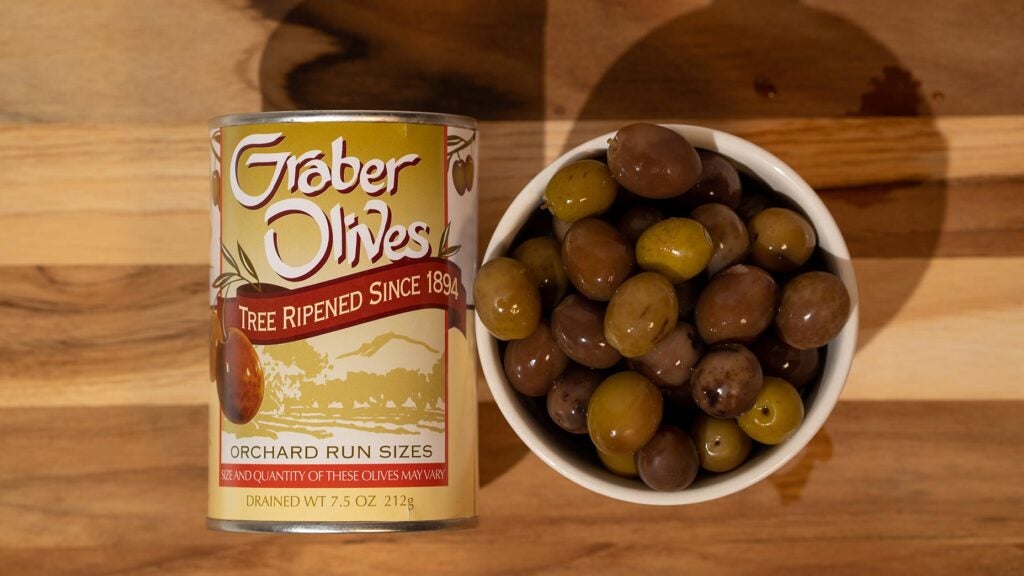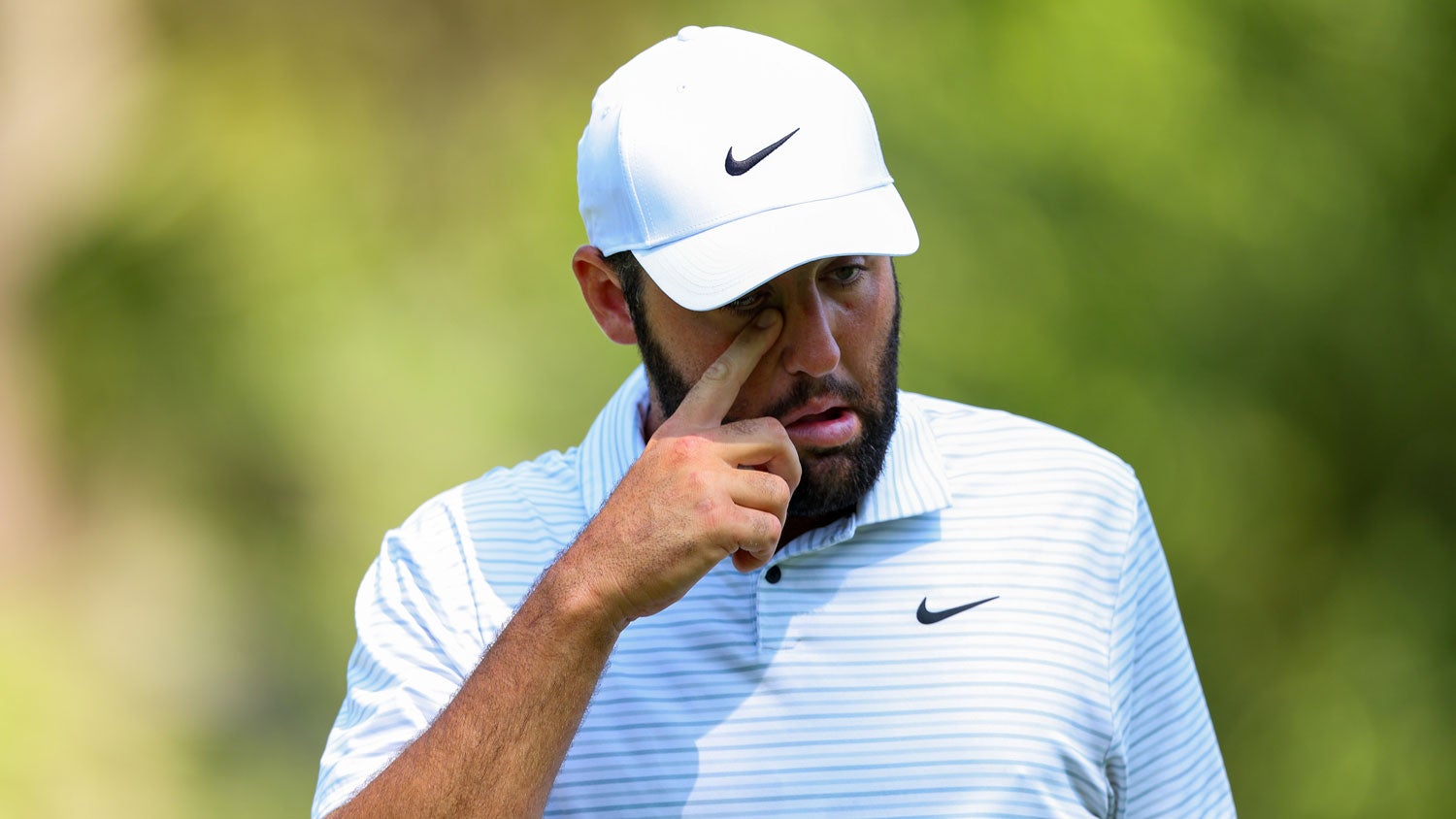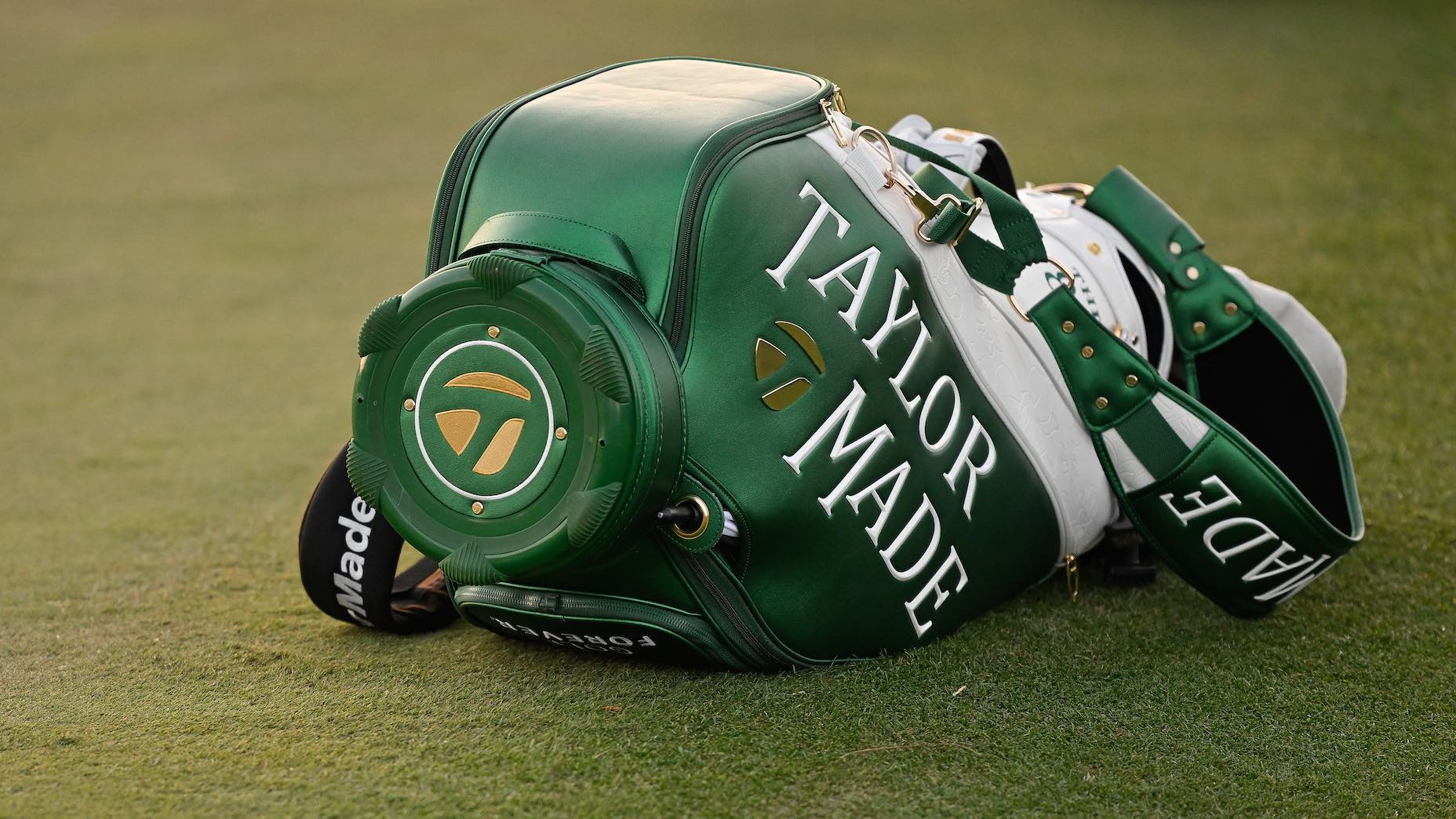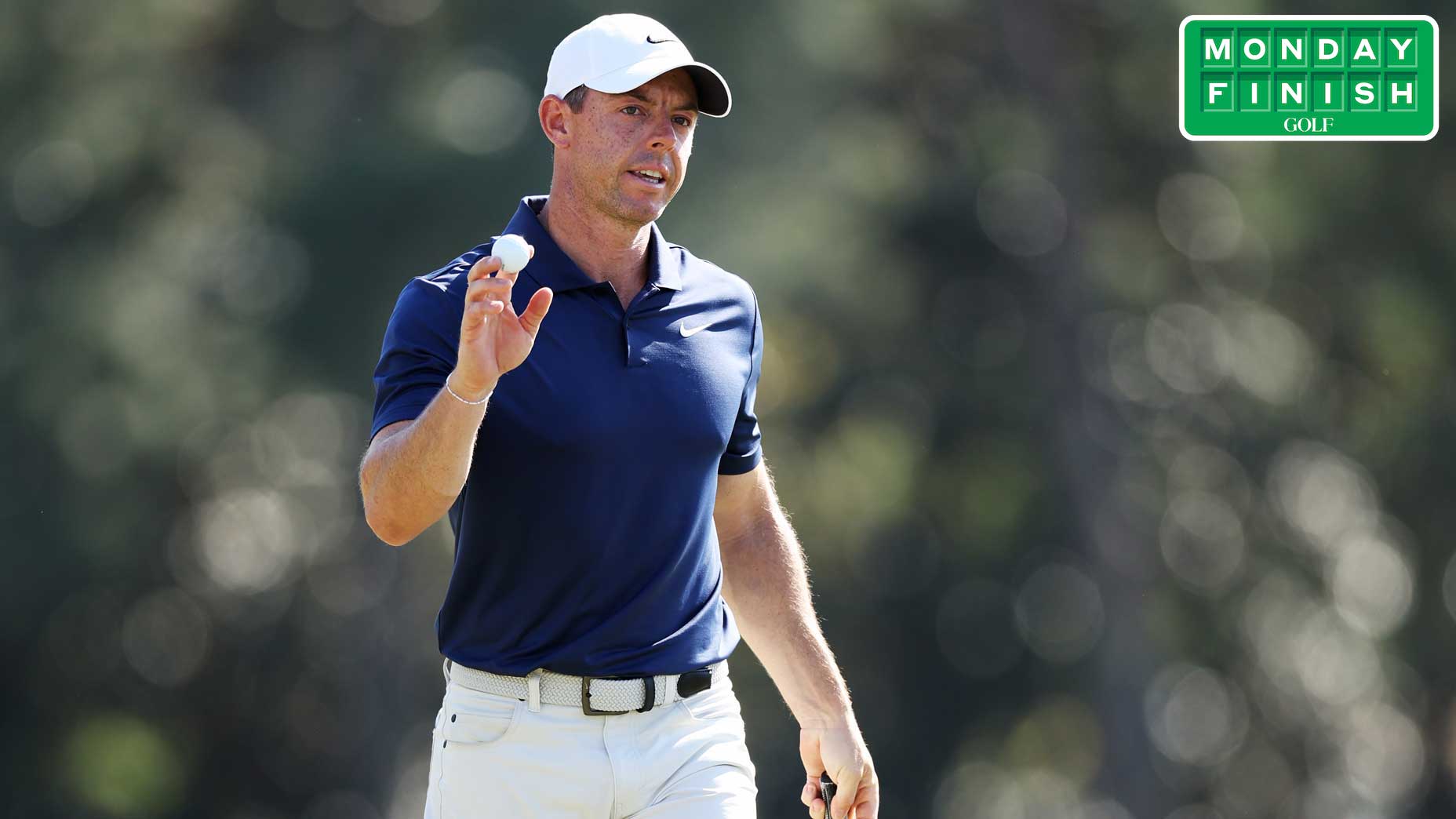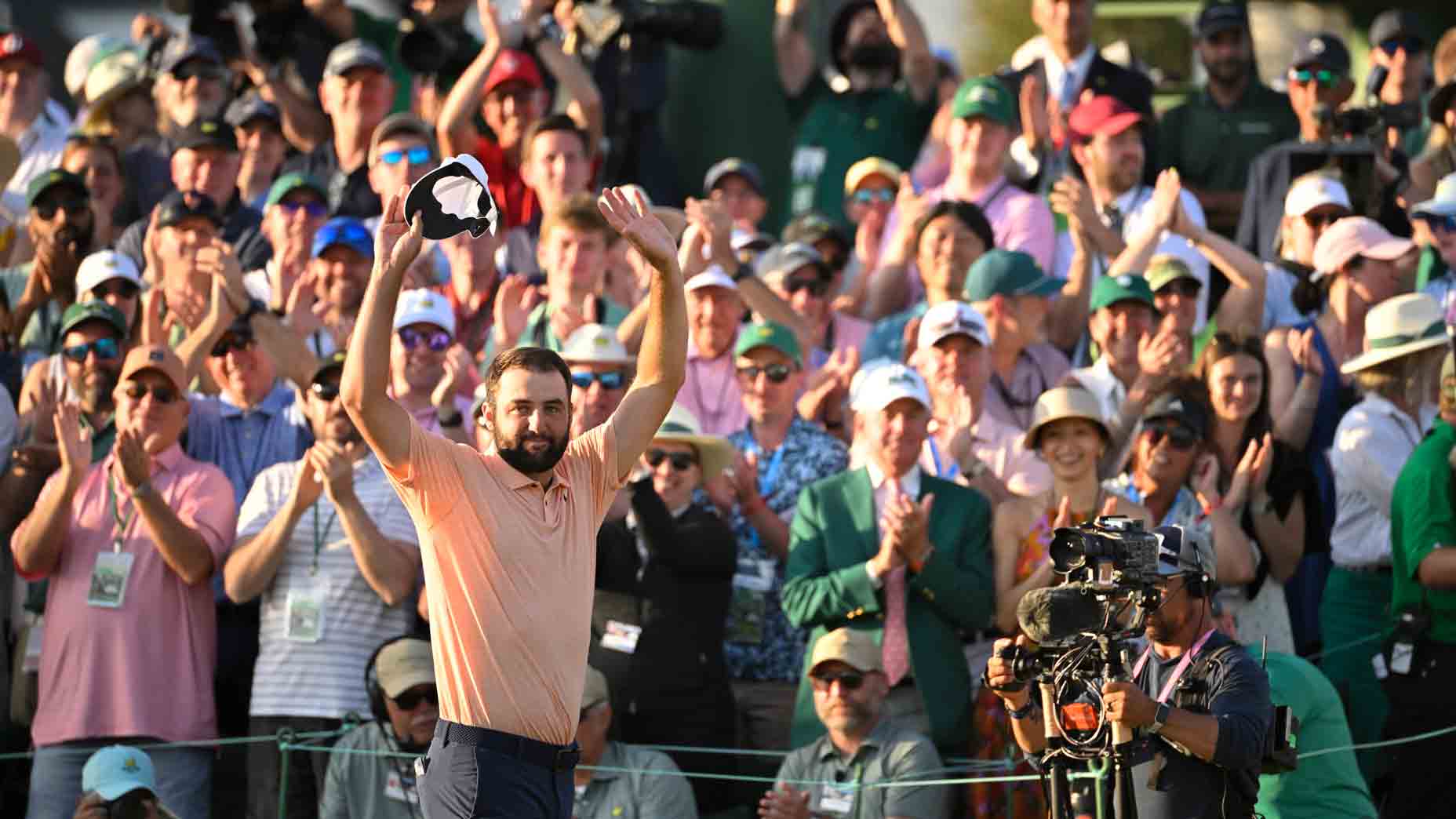This year, as with every year, Augusta National will play host to the holiest tradition in golf: the Masters Champions Dinner.
On the Tuesday night before the tournament begins, more than 30 green jacket winners will descend upon an ornate room on the second floor of the Augusta National clubhouse for a meal many of them will later call the best of the year.
As is tradition, the honor of choosing the menu for this year’s event belongs to the reigning champion, Scottie Scheffler. In recent months, Scheffler has worked diligently with his wife, Meredith, and Augusta National’s team of culinary experts to craft a meal in his likeness. On the menu: cheeseburger sliders, firecracker shrimp, tender Texas ribeye and charred redfish alongside a selection of rare delicacies from the club’s wine cellar — and topped off with a warm chocolate chip cookie skillet.
It is said to be the responsibility of the reigning Masters champion to look after every detail of the evening, from soup course to dessert topping. Most champions take this duty with grave seriousness, carefully cultivating wine offerings and outsourcing ingredients from exotic locales.
But perhaps no element of the Champions Dinner is more serious than the singular menu item not up for consideration by this (or any) tournament champion. That apertif is a tradition unto itself; a snack so entrenched in club lore, so intrinsically tied to the Champions Dinner, it is served without question at every major club event.
This is the story of Augusta National’s olives — of the club legend who found them, the tradition that entrenched them and the 129-year-old family business behind them.
They are the club’s most beloved food. If you trust the palates of those who devour them annually, they might also be the best olives on earth.
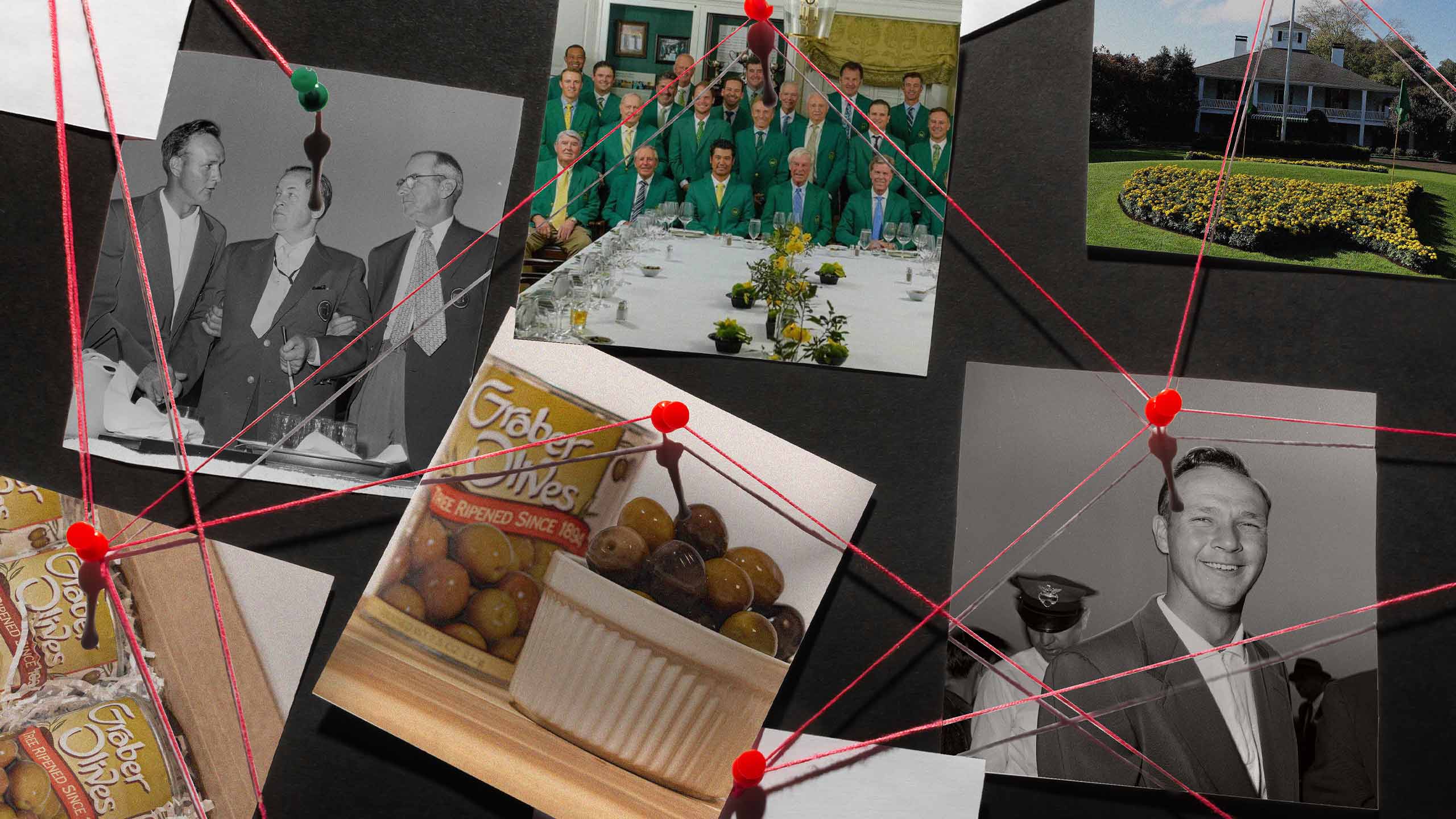
I. Mr. Roberts’ Opus
In the beginning, Augusta National had golf, and it had olives.
It is difficult to trace the official origins of the club’s love affair with the greenish fruits that adorn its tables, but it’s easier to piece together how they came into favor with its kitchen staff. His name is Clifford Roberts.
Roberts was the co-founder of Augusta National. The club’s first chairman, “Mr. Roberts” — as he was called by almost everyone who knew him — was a revolutionary force in building the club and the tournament into national recognition in the early 20th century.
Roberts was, by all accounts, a control freak. He lorded over the club and its tournament with an iron fist, quick to straighten those who fell short of his exacting standards. The stories of his attention to detail are plentiful, but few are more emblematic of his fastidiousness than the year the club’s famed azaleas dared bloomed early. That spring, it was said that Roberts ordered the grounds staff to halt the bloom by … packing each plant with ice.
The founder’s habits even bled into his appetite. As David Owen wrote in his book The Making of the Masters, Roberts ordered the same grilled chicken breast sandwich on white toast every day at the Augusta National clubhouse, consulting the menu each time he ordered.
But the food Mr. Roberts loved most didn’t have a place on the menu, nor did it need one. It was delivered to him, without request, at the beginning of every meal. The item was a proper delicacy, an appetizer befitting the club’s understated, old-world charm: lightly burned cornbread and olives the size of golf balls.
Of course, Roberts didn’t like just any olives. Over the years, he’d developed a taste for a specific brand. His olives of choice were enormous, greenish in color and subtle in taste — a briny, fleshy combination that was at once reminiscent of a traditional black olive and decidedly more subdued. Unlike the club’s other foods, which were served to guests using only fine glassware, Roberts insisted the olives be offered straight out of the tin.
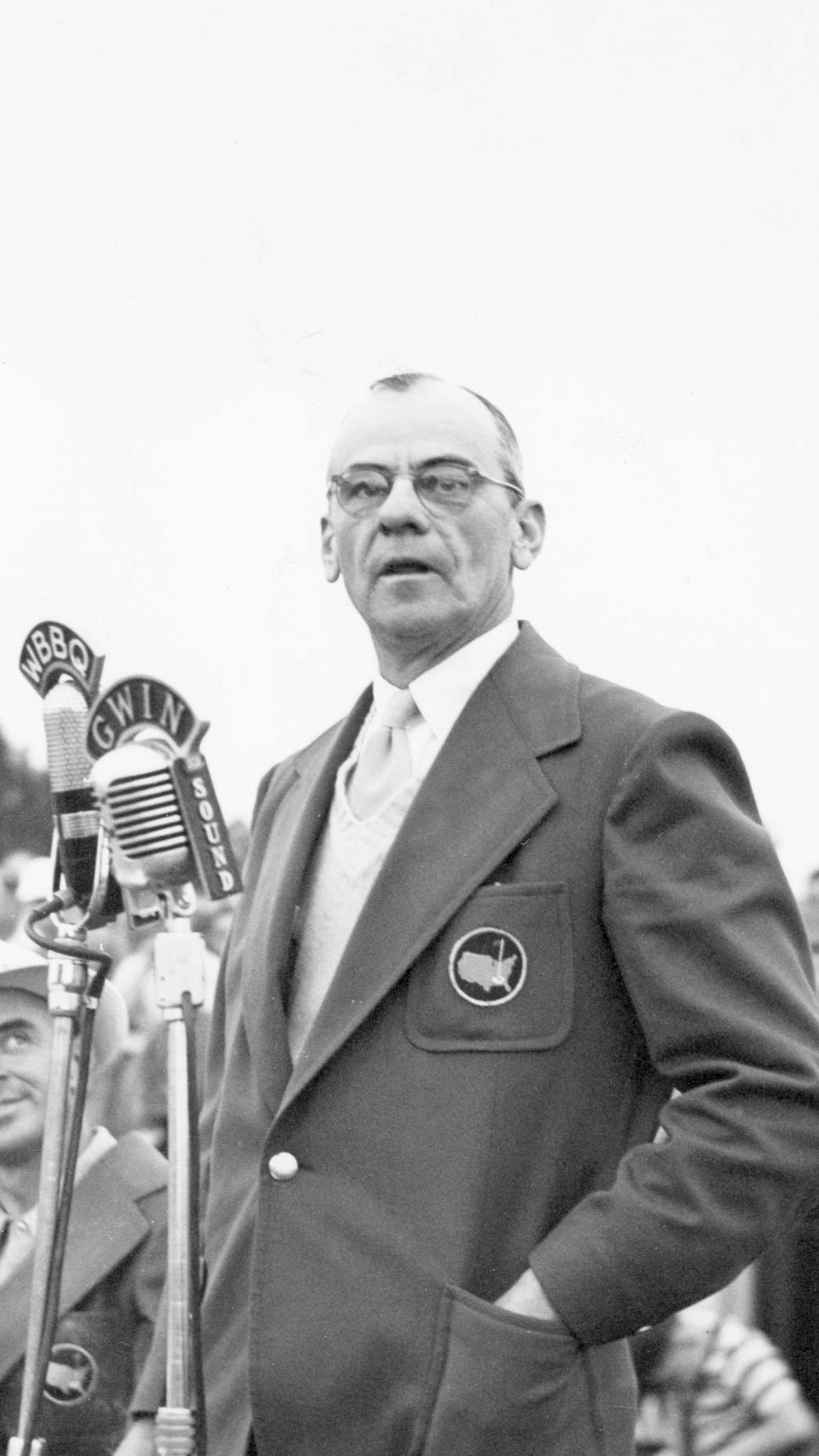
Before long, Roberts’ preference became club tradition. Many of the club’s biggest meals were served with an amuse-bouche of cornbread and olives in homage to the founder. After the first Champions Dinner was held in honor of Ben Hogan in 1952, the dish quickly became a staple.
Today, a conversation with any number of former Masters winners reveals that, among Augusta National’s many traditions, none is more beloved by those at the Champions Dinner than the pre-dinner snack.
“Oh, the olives,” said Larry Mize, the 1987 winner. “Bernhard Langer sits next to me and we love the olives. The olives are out of this world. Even if you’re not an olive fan, I’ve never had an olive like this.”
“Those olives are absolutely the most delicious thing on earth,” agreed Fuzzy Zoeller, the 1979 winner, in a 1999 Sports Illustrated interview with Alan Shipnuck. “Arnold [Palmer] and I usually have a contest to see who can put more of them away.”
Indeed, Augusta National’s olives are so famous, some former winners have grown protective of the tradition. Asked recently about the Champions Dinner’s olive obsession, the ever-playful 1992 champion Fred Couples answered coyly.
“Did Sandy put you up to that?” Couples said with a grin, referencing the 1988 winner, Sandy Lyle. “Was it Trevor [Immelman, ’08]?”
As it turned out, Couples himself was the culprit. He is the only Masters champion to include the club’s olives on his Champions Dinner menu.
“They’re about this big,” Couples said, positioning his thumb and pointer finger about an inch apart. “I sit next to Sandy and he inhales them. I don’t know where they get them, but they’re huge.”
Couples couldn’t remember — or perhaps chose not to disclose — the club’s olive source, but he did offer a clue: anyone could buy them, so long as you knew where to look.
“I’ve never bought ’em,” Couples added. “But everyone at the Champions Dinner buys them, and they ship ’em to their house.”
Rather than accept culpability for disclosing a club secret, Couples steered us toward his old pal Tom Watson (’77, ’81), who he’d heard was on the distribution list.
“Graber olives,” Watson said. “You can buy them in the can. They’re great.”
Then, not sensing the smoking gun, Watson doubled down.
“G-R-A-B-E-R.”
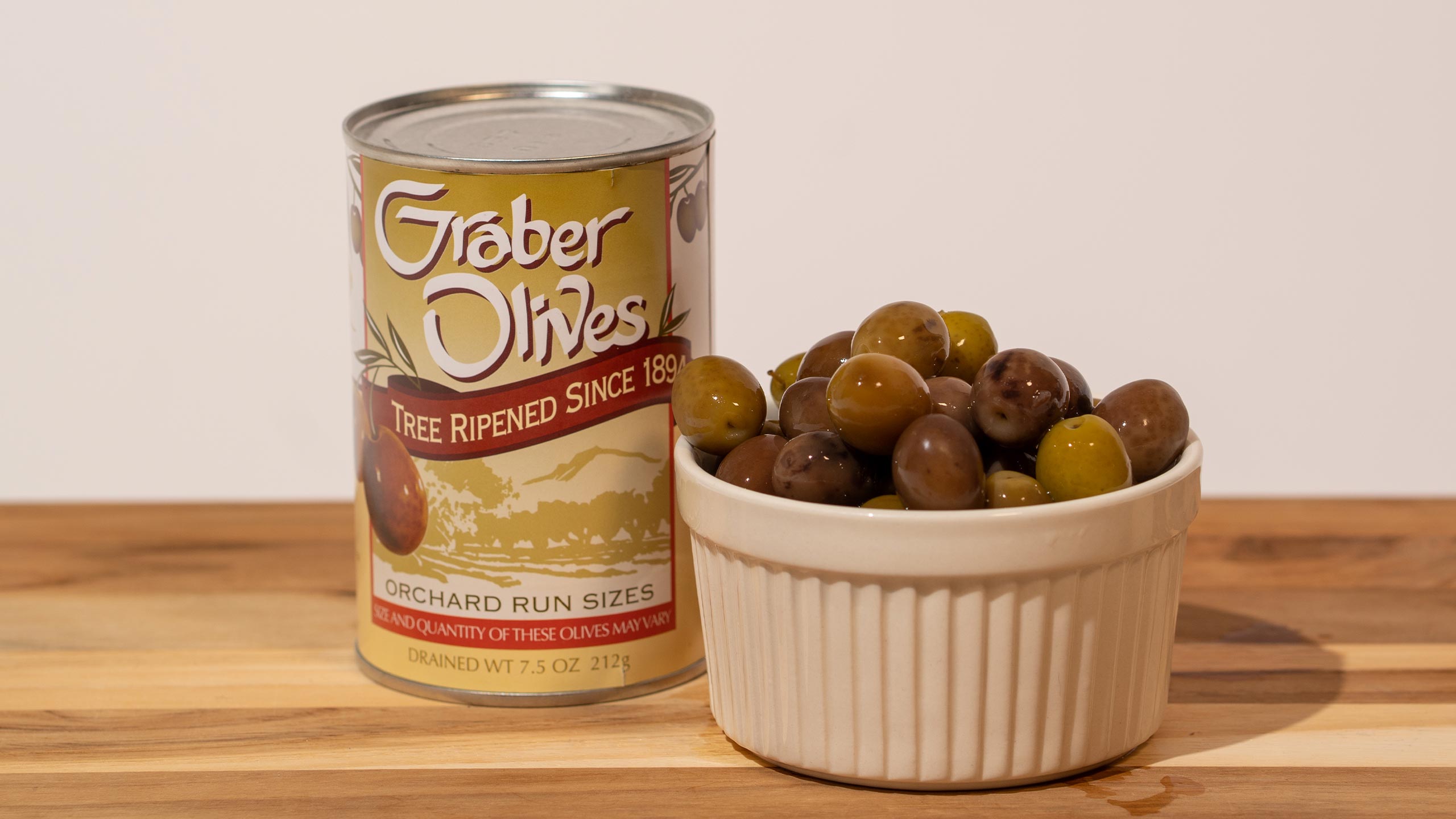
II. Augusta
Olives are an acquired taste, even these olives.
Back in the early 1980s, Cliff Graber learned that lesson the hard way when he tried to woo a pretty girl with a box of his family’s olives. The woman, who detested green olives, was mortified by the gesture.
“He said, ‘Open a can, try them!'” she remembers. “I stared at them for a while, and finally said, ‘Oh, my family will love them when they come to visit.'”
Cliff would eventually convince the girl, Maura, to try her first Graber olives. Perhaps as a testament to the product, or to his persistence, she gave him a shot. The two have been married for 32 years, forming the third generation of the Graber Olive Co.
“I’m just not a green olive eater,” Maura says today of the initial rejection.
Cliff, it seems, is still getting over it.
“They weren’t green.”
Maura — the family’s matriarch — wasn’t the first family member to hold an aversion to olives, nor would she be the last.
“I’ve tried other olives, but to be honest with you, I don’t like them,” Maura’s son, Robert, the youngest Graber says. “I don’t like the taste at all.”
But Robert, like the three generations of Grabers before him, still adores the family crop.
“If you blindfolded someone and they tasted one of our olives, they wouldn’t even think it was an olive,” Robert says. “It’s a very mild, salty taste. It sort of melts in your mouth.”
For what it’s worth, the hype isn’t purely situational — Graber olives are different from their grocery store counterparts. As opposed to other olives, which are picked from the tree in one fell swoop, Graber olives are “full tree-ripened,” meaning they are removed from the branch only when they’ve reached peak ripeness. This results in larger, more robust fruit, which, combined with the family’s secret saltwater brining process, produces Graber’s distinctive taste. As a result, Graber olives are neither black nor green, but a color wholly their own.
“When we pick them, they’re a purplish, reddish color,” Maura said. “Then they turn greenish brown during the processing. They’re the only olives that can really be called tree-ripened.”
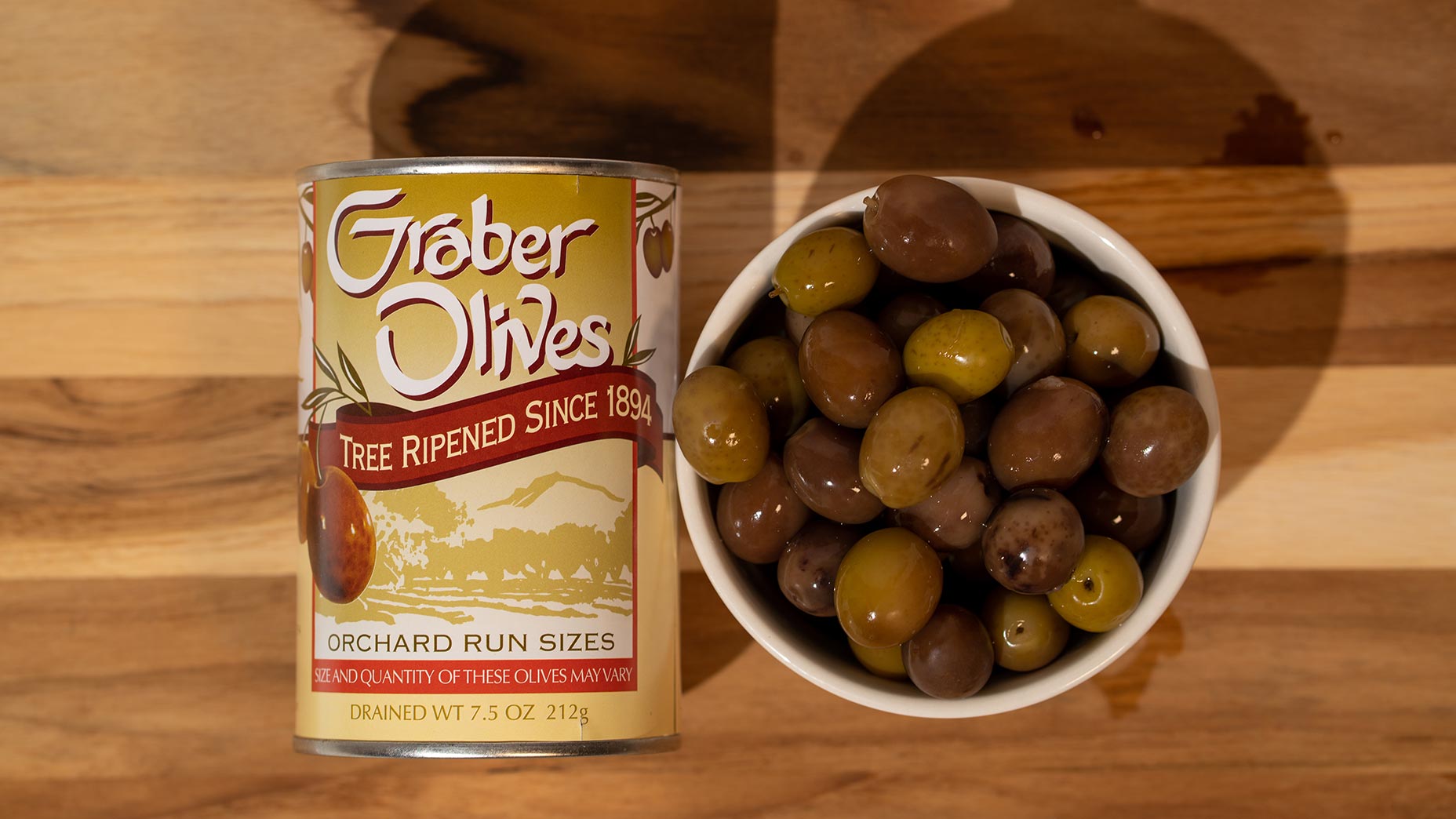
The Graber Olive Company was founded by C.C. Graber in 1894 on the remains of a fruit farm, but it wasn’t until the 1930s that the Grabers realized their good fortune. The Graber olive house was in Ontario, Calif. — directly en route to Hollywood’s two glitziest vacation destinations. “We were partway to Vegas, and halfway to Palm Springs,” Maura said.
Before long, Graber had become the olive to the stars, counting L.A. giants like Bing Crosby, Paul Newman and Bob Hope as devotees. A cult following grew, and soon the Grabers were an institution, shipping cans all over the world. Today, there are four generations of Grabers who have worked in the olive business — C.C., Robert, Cliff and Robert II — which is in its 129th year in 2023.
The family business is a tradition all its own for the Grabers, and that heritage surely endears itself to the family’s one and only bulk client: a golf club — also on the remains of a fruit farm — 150 miles east of Atlanta. It isn’t like the Grabers to offer their cans wholesale, but this club isn’t your average customer.
Around the Graber business, the client goes by only one name.
Augusta.
III. The Olive Theory
The Graber family has been selling olives to Augusta National for so long, they’re not even sure when the relationship started.
“We’d always been told that Arnold Palmer was the first,” Maura said. “It was 1959, and Arnold Palmer supposedly walked into his green jacket dinner and asked, ‘Where are the Graber olives?'”
There’s little question that Arnie, a winner in 1958, ’60, ’62 and ’64, loved Augusta National’s olives, but it seems unlikely that he was the first person to introduce the fruit to Augusta National. Several accountings of the club’s history trace its olive roots back to Clifford Roberts in the 1930s, decades before Palmer’s arrival. The Graber family concedes it’s possible the Palmer story is just “folklore.” At the very least, it’s evidence that Graber olives were served at the club before Palmer’s Champions Dinner arrival.
“So much of our records are lost or in paper somewhere,” Maura said. “I’m sure we have the answer, but I just don’t know where.”
(The club, following a long-standing tradition of discretion surrounding its business matters, did not respond to GOLF’s request for comment on the origins of its olives.)

There is no such ambiguity around the club’s current ordering structure. Augusta National has purchased olives from Graber the same way since at least the 1950s. A member of the club staff will call Cliff Graber, strictly by phone, to place an order. Historically, the club interacts only with Cliff, and purchases only one product: size-16 olives. And why size 16?
“It’s the biggest one we sell,” Robert said.
According to the Grabers, a size-16 olive measures an average of 1 inch in diameter — a biblical size for the inside of a martini glass. For reference, a golf ball is 1.68 inches in diameter.
Graber sells only a finite number of size-16 cans each season, and inventory is growing more limited due to the effects of climate change. Still, the Graber family ensures an Augusta National-sized order of size-16 cans is set aside at the beginning of each harvest. (Size-16s are sold out on the Graber website, with none expected back in stock soon.)
“All we know is that we’re the only olives they serve,” Maura said.
Some years, as with this year, the club will place multiple orders in a season. But, on average, the Grabers said, Augusta National spends more than $5,000 annually with them. The club’s most recent order was for 528 cans of size-16s — at a cost of a little more than $5,500.
Cost is irrelevant to most Graber olive customers, because few olive-lovers who have tried Grabers find themselves capable of returning to life before them. Witness the scene at the Masters Champions Dinner.
“We love them,” Larry Mize said. “If they don’t bring them around, [Bernhard] Langer and I will request them, and they’ll go get them for us.”
“The olives are famous,” concurs Langer, a champion in 1985 and ’93.
Close to a century after this great tradition began, there is a certain amount of pride the Grabers feel in their relationship with Augusta National — and a certain amount of shock at the response their olives have received.
“I was having work done on my teeth about 10 years ago, and the dentist told me he did an internship where he got to go to the Masters,” Maura recalled. “And he says, ‘I can’t believe it. I sat down at a table at Augusta National and there was a bowl of Graber olives!'”
Sometimes, the Grabers can’t believe it either. After all these years — 129 of them — they’ve become a Masters tradition.
“People just love them,” Maura said. “It’s hard not to get excited about something your customers are so excited about.”
From a distance, it’s easy to see the Graber olive story as one of cosmic destiny; a mingling of fate and divine intervention. But destiny doesn’t explain the one piece of the story the Grabers still can’t answer: How did Clifford Roberts find them?
“Cliff Roberts,” I asked the Grabers recently. “Does that name mean anything to you?”
On the other end of the line, they began to laugh, the noise crackling through the phone.
As the laughter quieted, the elder Graber shuffled toward the phone.
“Well, yes,” he said. “The name does mean something to us.”
“My grandpa was Cliff, and my dad was Robert, and I’m Cliff, and my son is Robert.”
We may never know how Clifford Roberts discovered his beloved Graber olives, but we may not need to. As it turns out, some Masters mysteries are even better unsolved.


